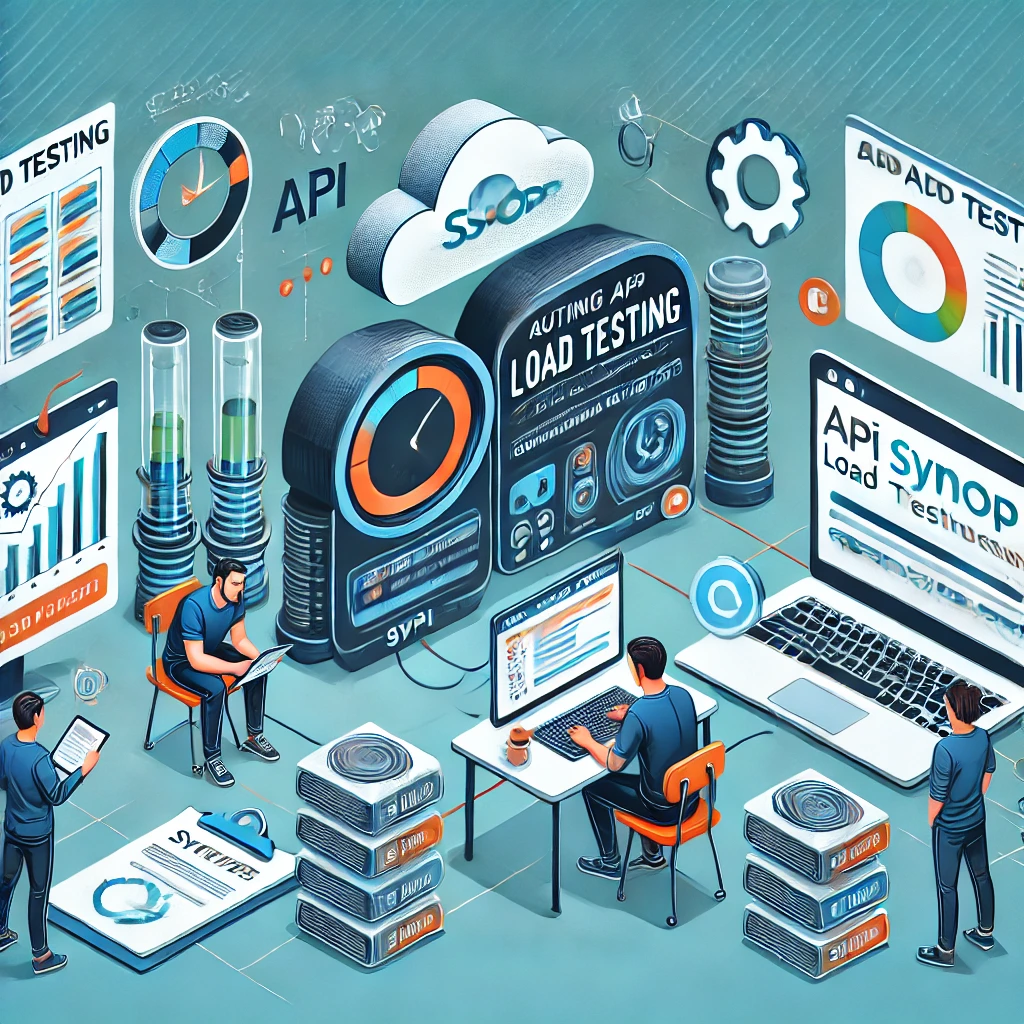Using Syncloop to Automate API Load Testing Scenarios

Syncloop provides powerful tools to automate API load testing scenarios, enabling developers to simulate real-world traffic, identify performance bottlenecks, and optimize API workflows. This blog explores how Syncloop facilitates automated load testing and offers best practices for ensuring API reliability and scalability.
The Importance of Load Testing
Load testing helps ensure that APIs can:
- Handle Traffic Spikes: Support increased traffic during peak usage periods.
- Maintain Performance: Deliver consistent response times under high load.
- Identify Bottlenecks: Detect and resolve performance constraints in workflows.
- Ensure Scalability: Verify that APIs can scale seamlessly with user demands.
- Improve Reliability: Minimize downtime and failures during stress conditions.
Challenges in Manual Load Testing
- Limited Scalability Simulating high traffic manually requires significant resources and coordination.
- Inconsistent Results Variations in manual testing scenarios can lead to unreliable results.
- Time-Consuming Processes Repeatedly testing multiple endpoints or scenarios manually is labor-intensive.
- Lack of Real-Time Insights Difficulties in capturing and analyzing performance metrics during testing.
- Complex Workflows Testing multi-step processes with manual interventions is prone to errors.
How Syncloop Automates API Load Testing
Syncloop provides robust features to streamline and enhance load testing:
- Scenario Simulation Automate the simulation of realistic traffic patterns, including spikes and sustained loads.
- Dynamic Scaling Test APIs under varying loads to evaluate their scalability and performance.
- Real-Time Monitoring Capture key metrics such as latency, throughput, and error rates during testing.
- Workflow Automation Automate multi-step test scenarios to evaluate end-to-end API workflows.
- Customizable Test Plans Design and execute test cases tailored to specific API use cases.
- Analytics and Reporting Generate detailed reports with insights into API performance and potential bottlenecks.
Steps to Automate Load Testing with Syncloop
Step 1: Define Test Scenarios
Identify key use cases and design test scenarios, such as:
- Handling concurrent user logins.
- Processing high transaction volumes.
- Responding to sustained traffic spikes over extended periods.
Step 2: Configure Load Testing Workflows
Use Syncloop’s workflow automation tools to:
- Simulate concurrent API requests with varying payloads and intervals.
- Automate retries for failed requests to assess error handling mechanisms.
- Include realistic delays and variations in request patterns.
Step 3: Monitor Performance Metrics
Enable real-time monitoring in Syncloop to:
- Track response times, throughput, and success rates during load tests.
- Identify performance trends and anomalies, such as latency spikes or increased error rates.
- Visualize system behavior under different load conditions.
Step 4: Analyze Bottlenecks
Use Syncloop’s analytics features to:
- Pinpoint specific endpoints or workflows causing performance degradation.
- Correlate bottlenecks with resource utilization metrics, such as CPU and memory usage.
- Assess the impact of varying load levels on API performance.
Step 5: Optimize and Retest
Iteratively improve API workflows by:
- Optimizing resource allocation and scaling configurations.
- Refining caching strategies to reduce redundant processing.
- Minimizing payload sizes and improving serialization efficiency.
Step 6: Generate Reports
Leverage Syncloop’s reporting tools to:
- Summarize test results, including key metrics and identified issues.
- Share insights with stakeholders to prioritize performance improvements.
- Document baseline performance benchmarks for future testing.
Best Practices for Automated Load Testing
- Simulate Realistic Traffic Patterns Include a mix of steady-state, burst, and peak load scenarios.
- Test Across Environments Run load tests in staging and production-like environments to ensure consistency.
- Focus on Critical Endpoints Prioritize testing of APIs with the highest impact on user experience or system operations.
- Monitor Continuously Use Syncloop’s real-time monitoring tools to track performance throughout testing.
- Document and Review Maintain detailed records of test scenarios, results, and improvements for future reference.
Example Use Case: E-Commerce API
An e-commerce platform uses Syncloop to automate load testing for its APIs:
- Scenario Simulation: Tests API performance during flash sales with thousands of concurrent requests.
- Dynamic Scaling: Evaluates the platform’s ability to scale resources automatically under load.
- Monitoring: Tracks latency and error rates for critical workflows, such as checkout and payment processing.
- Optimization: Refines caching and load balancing strategies based on test results.
- Reporting: Generates detailed performance reports to inform infrastructure planning.
Benefits of Using Syncloop for Load Testing
- Enhanced Scalability: Ensure APIs can handle increasing traffic without degradation.
- Improved Performance: Identify and resolve bottlenecks to optimize response times.
- Streamlined Testing: Automate complex test scenarios for efficiency and consistency.
- Better Insights: Gain actionable insights into API behavior under load conditions.
- Proactive Improvements: Address performance issues before they impact users.
The Future of Automated API Load Testing
As API ecosystems grow in complexity and scale, automated load testing will become increasingly vital for ensuring performance and reliability. Syncloop provides developers with the tools to design, execute, and analyze load tests effectively, enabling seamless and resilient API operations.
Image Description
A conceptual illustration showcasing Syncloop’s tools for automating API load testing scenarios, featuring traffic simulation, real-time monitoring, and detailed analytics. The image highlights scalable and resilient API performance under varying load conditions.
Back to Blogs